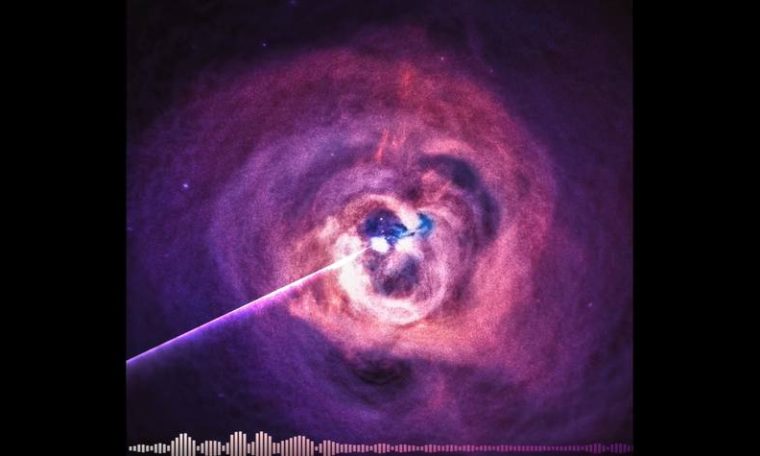
There is an ancient legend that claims that there is no sound in space because much of it is essentially a vacuum, providing no medium for sound waves to propagate. but NASAThe United States space agency not only destroyed it, but also managed to match the sound caused by the black hole.
Astronomers found that pressure waves sent out by the black hole created ripples in the cluster’s hot gas that could be translated into a note. But this note is about 57 octaves below C major, which is the basis of the tonal system, and which navigates through frequencies that the human ear cannot capture.
It was then that researchers at NASA’s Chandra Observatory managed to translate astronomical data into sound in the black holes of the Perseus and M87 galaxy clusters, which are approximately 240 million and 53 million light-years from Earth, respectively. According to NASA, a cluster of galaxies contains a large amount of gas and this provides a mieo for sound waves to travel.
In Perseus, sound waves were detected by scientists and made audible for the first time. The researchers raised the pitch of the scale between 57 and 58 times higher than the original sound, so that it could be heard by humans. This implies that the sound was between 144 quadrillion and 288 quadrillion times louder than its original frequency.
“The radar-like sweep around the image allows you to hear the waves emitted in different directions. In the visible image of this data, the blue and purple shows the X-ray data captured by Chandra,” NASA explained.
The US space agency has also managed to extract sound from another famous black hole, Messier 87, or M87. It has been studied by researchers for decades and became famous in 2019 with the launch of a project. “The brightest region on the left side of the image is where the black hole is located and in the upper right corner is a jet produced by the structure. It. Sonification scans the image in three layers from left to right, each wavelength as a single wave of audible tones. Mapped to a different range. Radio waves are mapped to the lowest tones, optical data to midtones, and X-rays are detected by Chandra. Highest tones. Brightest part of the image from the highest part of sonification matches,” NASA said.
The study was led by Chandra Observatory scientist Kimberly Arcand, astrophysicist Matt Russo and composer Andrew Santaguida (both from the System Sound Project).



